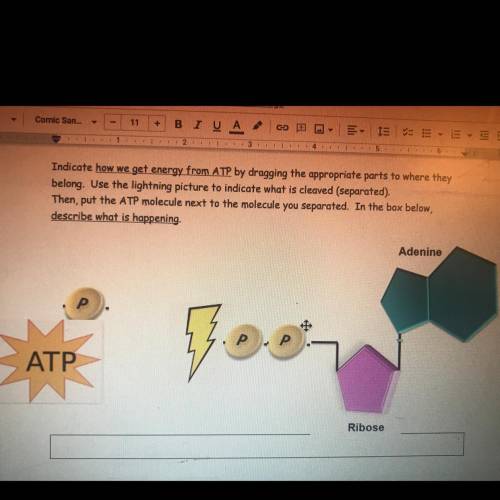How do I describe what’s happening pls help :( it’s due in an hour
...


Answers: 1


Another question on Biology

Biology, 21.06.2019 23:30
Considering the yellow and green pea color phenotypes studied by gregor mendel: a. what is the biochemical function of the protein that is specified by the gene responsible for the pea color phenotype? (1 point) b. a null allele of a gene is an allele that does not specify (or encode) any of the biochemical function that the gene normally provides (in other words, either no protein at all or only non-functional protein is produced from it). of the two alleles, y and y, which is more likely to be a null allele? (1 point) c. in terms of the underlying biochemistry, why is the y allele dominant to the y allele? (2 points) d. why are peas that are yy homozygotes green? (1 point) e. the amount of protein produced from a gene is roughly proportional to the number of functional copies of the gene carried by a cell or individual. what do the phenotypes of yy homozygotes, yy heterozygotes, and yy homozygotes tell us about the amount of sgr enzyme needed to produce a yellow color? explain your reasoning. (2 points)
Answers: 1

Biology, 22.06.2019 00:30
On a recent expedition to a remote region of northern canada, scientists uncovered skeletal remains from about 100,000 years ago. surprisingly, all the skeletal remains, which included many species from differing biological families and spanned about two thousand years, showed evidence of experiencing temperatures in excess of 1000 degrees fahrenheit (or 538 degrees celsius). which of the following, if true, best explains the apparent paradox between the cold environment and the evidence of the bones experiencing hot temperatures? (a) chemical changes that naturally occur during the process of decay in only one north canadian species produce the same evidence of the species' skeletons being exposed to hot temperatures as the expedition scientists found. (b) a little over 103,000 years ago, a large fire is known to have occurred in northern canada. (c) strong evidence exists that as early as 70,000 years ago, homo sapiens around the world relied heavily on fire to cook animals. (d) in the same expedition and in roughly the same layer of excavation, scientists found rudimentary wood cutting and hunting tools used by early humans.
Answers: 3

Biology, 22.06.2019 01:30
Which of the following shows the correct order in which light information travels through the eye? (2 points) lens, pupil, retina, optic nerve pupil, lens, retina, optic nerve pupil, lens, optic nerve, retina lens, pupil, optic nerve, retina
Answers: 2

Biology, 22.06.2019 03:50
During the winter, this species of fox has white fur, but in the summer, it has brown fur. what environmental change may have lead to this fox's fur color? snow cover increase in sun's brightness volcanic eruption global warming
Answers: 2
You know the right answer?
Questions

Social Studies, 16.07.2019 02:00

Spanish, 16.07.2019 02:00

Social Studies, 16.07.2019 02:00

Mathematics, 16.07.2019 02:00


Mathematics, 16.07.2019 02:00

Mathematics, 16.07.2019 02:00


History, 16.07.2019 02:00

Computers and Technology, 16.07.2019 02:00

History, 16.07.2019 02:00


Social Studies, 16.07.2019 02:00

Spanish, 16.07.2019 02:00

Social Studies, 16.07.2019 02:00

Social Studies, 16.07.2019 02:00







